Discover 35 hidden attractions, cool sights, and unusual things to do in Oxford (United Kingdom). Don't miss out on these must-see attractions: High Street, Cornmarket Street, and Broad Street. Also, be sure to include Ashmolean Museum in your itinerary.
Below, you can find the list of the most amazing places you should visit in Oxford (England).
Table of Contents
High Street
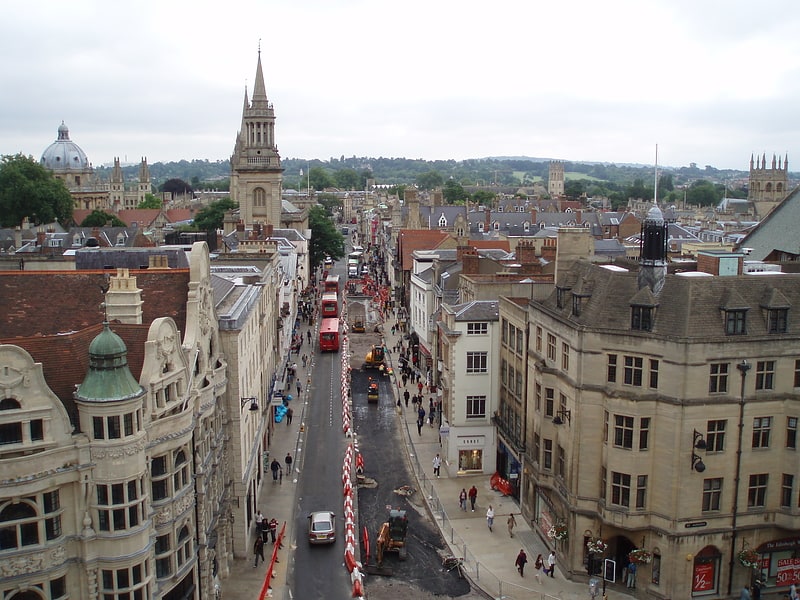
Street in Oxford, England. The High Street in Oxford, England, known locally as the High, runs between Carfax, generally seen as the centre of the city, and Magdalen Bridge to the east.[1]
Address: High St, OX1 Oxford
Cornmarket Street
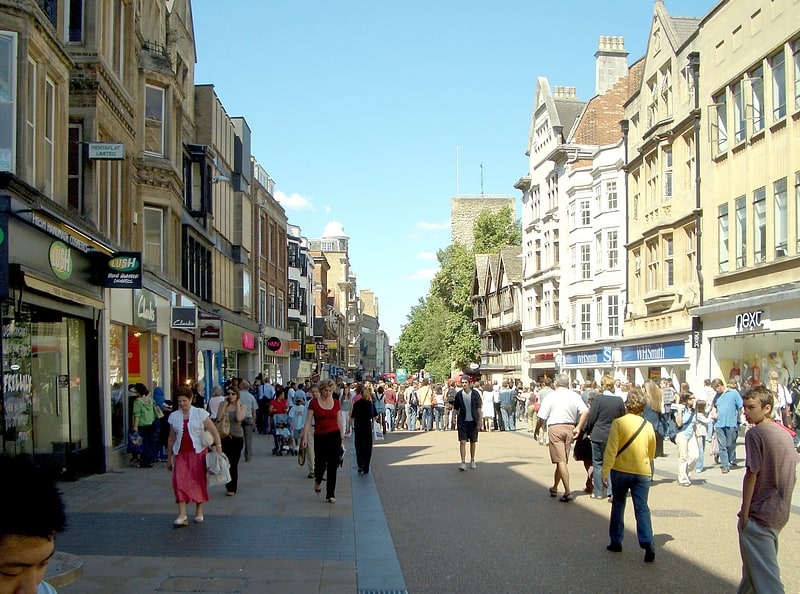
Street in Oxford, England. Cornmarket Street is a major shopping street and pedestrian precinct in Oxford, England that runs north to south between Magdalen Street and Carfax Tower.
To the east is the Golden Cross arcade of small jewellery and craft shops in a courtyard, leading to the Covered Market. To the west is the indoor Clarendon Shopping Centre that connects in an L-shape to Queen Street.
Cornmarket was semi-pedestrianised and made a limited-access street in 1999. Cycling is allowed 6pm to 10am. In 2002, it was voted Britain's second worst street in a poll of listeners to the Today programme. The rating was largely due to a failed attempt to repave the street in 2001. The granite setts, which had been laid extensively, cracked and the contractor went into liquidation. In 2003, it was repaved again and new benches installed, amidst reports of budgetary problems.[2]
Address: Cornmarket Street, OX1 3EY Oxford
Broad Street
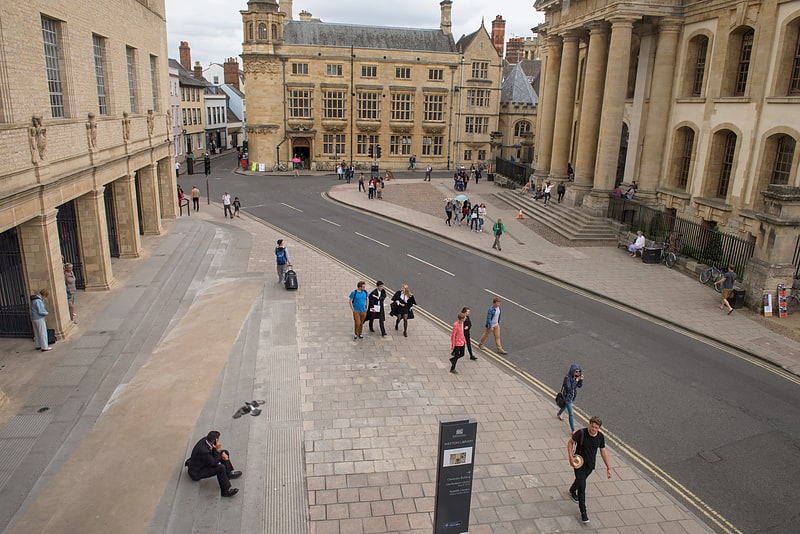
Street in Oxford, England. Broad Street is a wide street in central Oxford, England, just north of the former city wall. The street is known for its bookshops, including the original Blackwell's bookshop at number 50, located here due to the University of Oxford. Among residents, the street is traditionally known as The Broad.[3]
Address: Broad St, OX1 Oxford
Ashmolean Museum
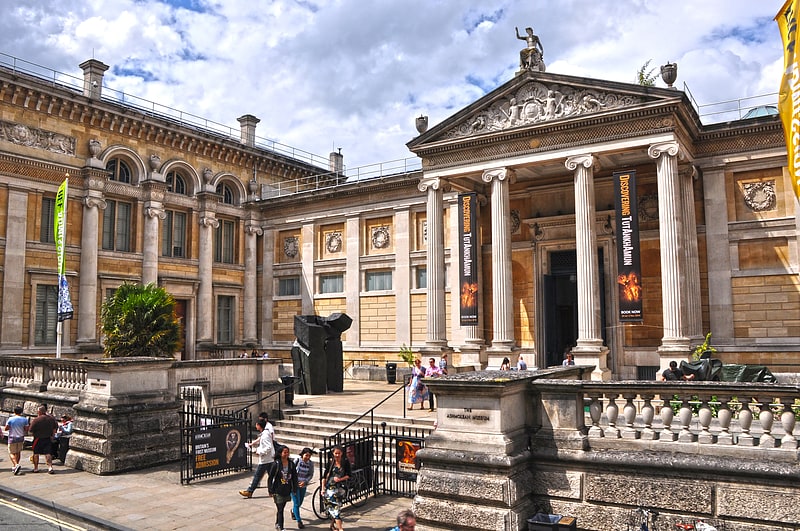
Museum in Oxford. The Ashmolean Museum of Art and Archaeology on Beaumont Street, Oxford, England, is the world's second university museum and Britain's first public museum. Its first building was erected in 1678–1683 to house the cabinet of curiosities that Elias Ashmole gave to the University of Oxford in 1677.
The present building was built between 1841 and 1845. The museum reopened in 2009 after a major redevelopment. In November 2011, new galleries focusing on Egypt and Nubia were unveiled. In May 2016, the museum opened new galleries of 19th-century art.[4]
Address: Beaumont St, OX1 2PH Oxford
Queen Street
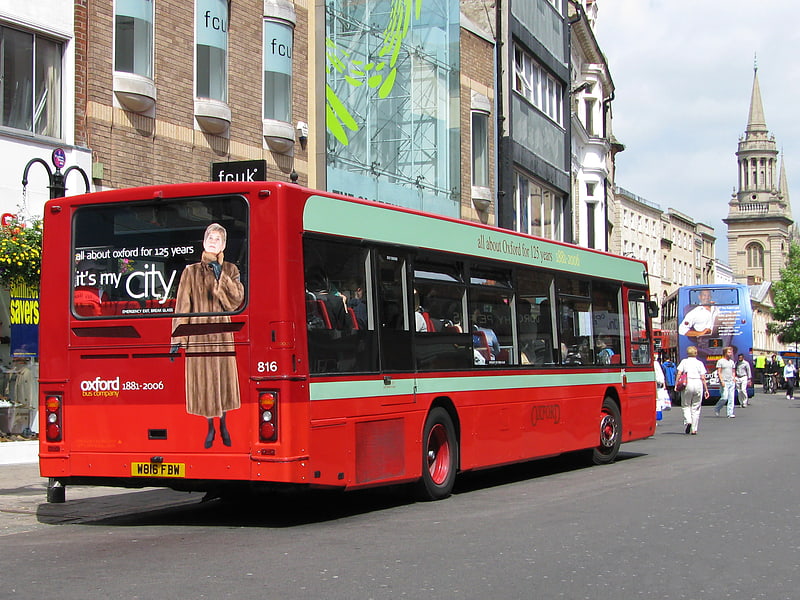
Street in Oxford, England. Queen Street is a pedestrianised shopping street in central Oxford, England. It is one-way for buses and taxis, two-way for cyclists outside main shopping hours, and forbidden for cars. It runs west from the centre of Oxford at Carfax. Here it adjoins Cornmarket Street to the north, the High Street continuing east, and St Aldate's to the south.
Halfway along on the north side is an entrance to the Clarendon Centre, a shopping centre. At the western end is Bonn Square, named after the German city of Bonn with which Oxford is twinned, and the Westgate Shopping Centre, where the old city gate to the west used to be located. New Inn Hall Street leads north from near here. Close by is the mound of Oxford Castle and the former Oxford Prison off New Road, which leads on to the west towards the Oxford railway station.
In the 13th century, the street was known as the Bailey due to its proximity with the castle. Cattle were slaughtered and the meat sold here, so the street later became known as Butcher Row. The slaughtering of animals in the street was outlawed by the Oxford Mileways Act of 1771 and the butchers moved to the Covered Market. The street was then named Queen Street after Queen Charlotte, the wife of King George III, who both visited Oxford in 1785. There were many gabled and timber-framed buildings here until the late 19th century. Until 1932, there was a showroom for Morris Garages in the street. In 1970, the street was pedestrianised. The buildings have mostly been replaced with modern stores, such as the Marks & Spencer shop on the south side of the street, built in 1975–8.[5]
Address: Queen St, OX1 Oxford
Covered Market
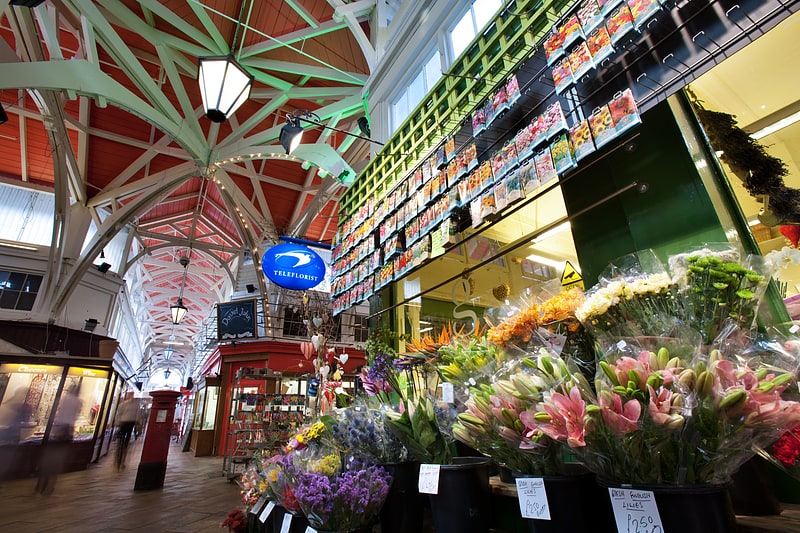
Shopping center in Oxford, England. The Covered Market is a historic market with permanent stalls and shops in a large covered structure in central Oxford, England.[6]
Address: Market St, OX1 3DZ Oxford
Turl Street

Street in Oxford, England. Turl Street is a historic street in central Oxford, England.[7]
Address: Turl St, OX1 Oxford
Magdalen Street
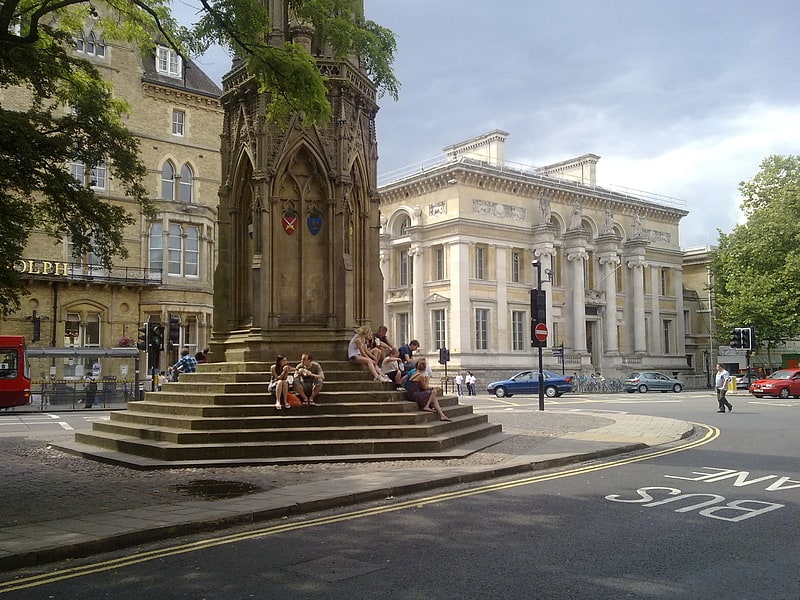
Street in Oxford, England. Magdalen Street is a short shopping street in central Oxford, England, just north of the original north gate in the city walls. Traditionally, the name of the street is pronounced and not as the name of the College, which is always.
At the southern end, Magdalen Street meets Cornmarket Street continuing to the south, Broad Street to the east and George Street to the west. At the northern end it continues as St Giles' to the north, with Beaumont Street to the west. To the west are shops. The street used to be the location of Oxford's leading department store for many years, Elliston & Cavell. It later became a Debenhams store. On the northern corner with Beaumont Street is the Macdonald Randolph Hotel, widely considered to be Oxford's leading hotel.
To the east is a historic church, St Mary Magdalen, originally established in Saxon times. Beyond that is Magdalen Street East and Balliol College. North of the church is the Martyrs' Memorial, commemorating the Oxford Martyrs.
Thornton's Bookshop opened in Magdalen Street in 1835 and was located here until 1840, and again from 1853 to 1863.
St Giles' Fair, held at the beginning of September each year and mainly in St Giles' to the north, extends into Magdalen Street. During the 1930s, the poet John Betjeman noted that:
It is about the biggest fair in England. The whole of St Giles' and even Magdalen Street by Elliston and Cavell's right up to and beyond the War Memorial, at the meeting of the Woodstock and Banbury roads, is thick with freak shows, roundabouts, cake-walks, the whip, and the witching waves.[8]
Address: Magdalen St, OX1 Oxford
University Church of St Mary the Virgin
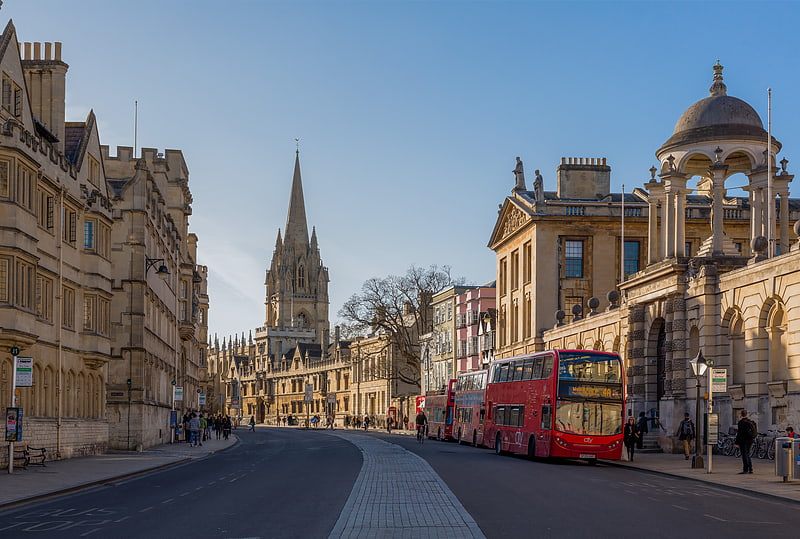
Building in Oxford, England. The University Church of St Mary the Virgin is an Oxford church situated on the north side of the High Street. It is the centre from which the University of Oxford grew and its parish consists almost exclusively of university and college buildings.
St Mary's possesses an eccentric baroque porch, designed by Nicholas Stone, facing High Street, and a spire which is claimed by some church historians to be one of the most beautiful in England. Radcliffe Square lies to the north and to the east is Catte Street. The 13th-century tower is open to the public for a fee and provides good views across the heart of the historic university city, especially Radcliffe Square, the Radcliffe Camera, Brasenose College, Oxford and All Souls College.[9]
Address: The High Street, OX1 4BJ Oxford
University of Oxford Botanic Garden
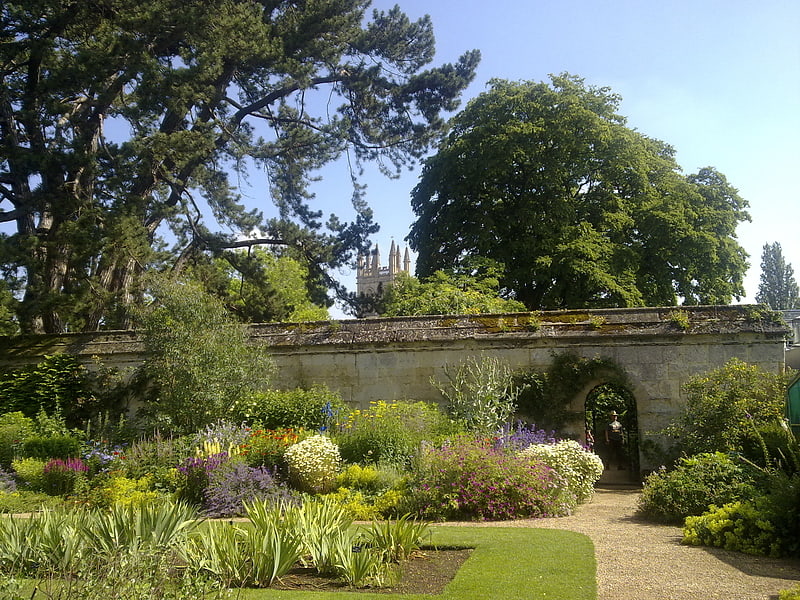
Gardens and glasshouses with 5000 species. The University of Oxford Botanic Garden is the oldest botanic garden in Great Britain and one of the oldest scientific gardens in the world. The garden was founded in 1621 as a physic garden growing plants for medicinal research. Today it contains over 5,000 different plant species on 1.8 ha. It is one of the most diverse yet compact collections of plants in the world and includes representatives from over 90% of the higher plant families.
Simon Hiscock became Horti Praefectus in 2015. His predecessor, Timothy Walker, served from 1988 to 2014.[10]
Address: Rose Ln, OX1 4AZ Oxford
Sheldonian Theatre
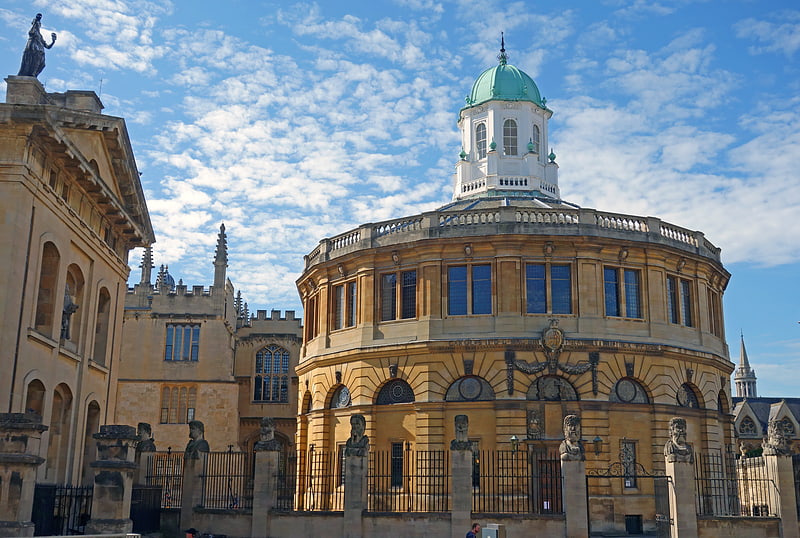
Building in Oxford, England. The Sheldonian Theatre, located in Oxford, England, was built from 1664 to 1669 after a design by Christopher Wren for the University of Oxford. The building is named after Gilbert Sheldon, chancellor of the University at the time and the project's main financial backer. It is used for music concerts, lectures and University ceremonies, but not for drama until 2015 when the Christ Church Dramatic Society staged a production of The Crucible by Arthur Miller.[11]
Address: Broad Street, OX1 3AZ Oxford
Oxford University Museum of Natural History
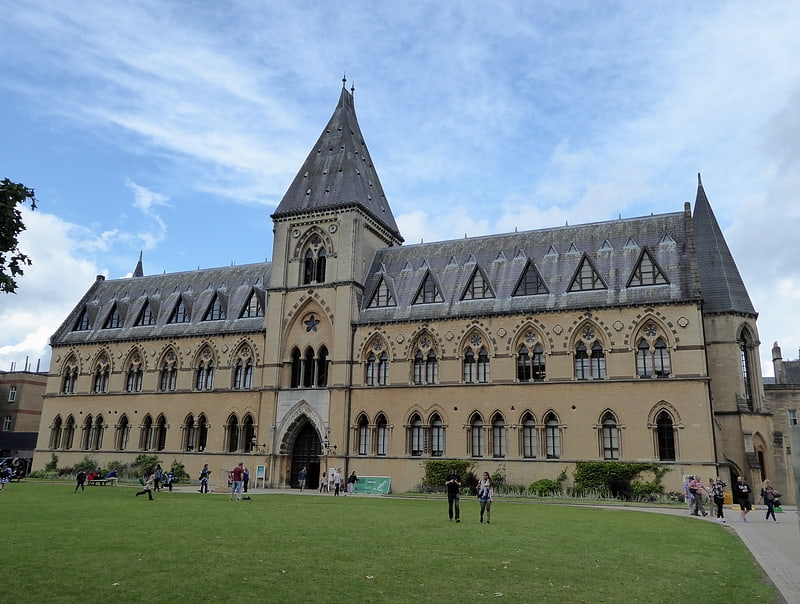
University hoard of scientific specimens. The Oxford University Museum of Natural History, sometimes known simply as the Oxford University Museum or OUMNH, is a museum displaying many of the University of Oxford's natural history specimens, located on Parks Road in Oxford, England. It also contains a lecture theatre which is used by the university's chemistry, zoology and mathematics departments. The museum provides the only public access into the adjoining Pitt Rivers Museum.[12]
Address: Parks Rd, OX1 3PW Oxford
Oxford Castle
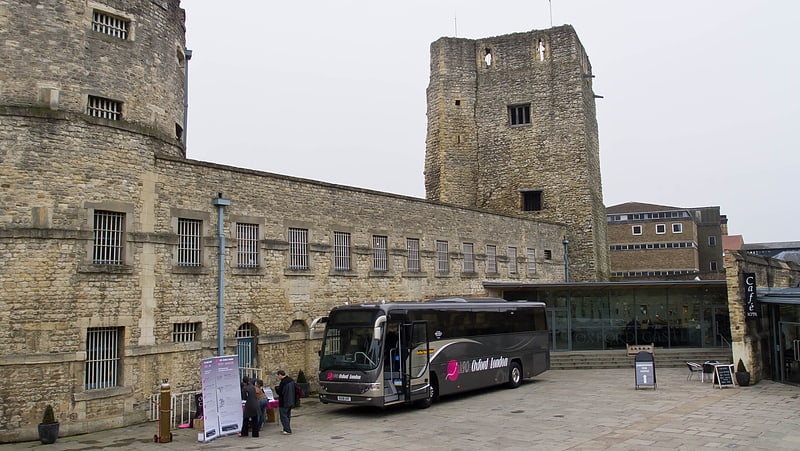
Part-ruined Norman castle . Oxford Castle is a large, partly ruined Norman medieval castle on the western side of central Oxford in Oxfordshire, England. Most of the original moated, wooden motte and bailey castle was replaced in stone in the late 12th or early 13th century and the castle played an important role in the conflict of the Anarchy. In the 14th century the military value of the castle diminished and the site became used primarily for county administration and as a prison. The surviving rectangular St George's Tower is now believed to pre-date the remainder of the castle and be a watch tower associated with the original Saxon west gate of the city.
Most of the castle was destroyed in the English Civil War and by the 18th century the remaining buildings had become Oxford's local prison. A new prison complex was built on the site from 1785 onwards and expanded in 1876; this became HM Prison Oxford.
The prison closed in 1996 and was redeveloped as a hotel and visitor attraction. The medieval remains of the castle, including the motte and St George's Tower and crypt, are Grade I listed buildings and a Scheduled Monument.[13]
Address: Oxford Castle, 3 New Rd., OX1 1AY Oxford
Little Clarendon Street
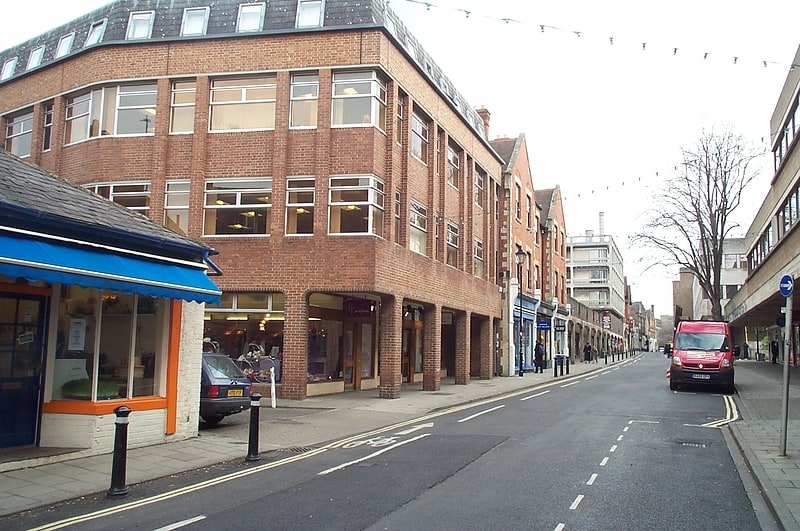
Street in Oxford, England. Little Clarendon Street is a short shopping street in northwest Oxford, England. It runs east-west between the south end of Woodstock Road opposite St Giles' Church to the east, Somerville College to the north and Walton Street to the west. One of the three principal streets in North Oxford off the Woodstock Road, the shops and cafés located there are considered bohemian; the other two streets are North Parade and South Parade. Occasionally nicknamed Little Trendy Street, its reputation was already apparent in the 1960s.[14]
Christ Church Cathedral
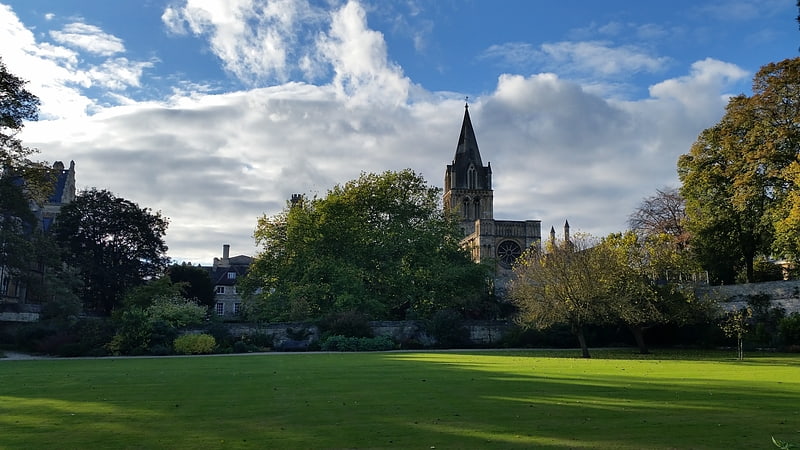
12th-century cathedral of famous college. Christ Church Cathedral is the cathedral of the Anglican diocese of Oxford, which consists of the counties of Oxfordshire, Buckinghamshire and Berkshire. It is also the chapel of Christ Church at the University of Oxford. This dual role as cathedral and college chapel is unique in the Church of England.[15]
Address: St Aldate's, OX1 1DP Oxford
North Parade
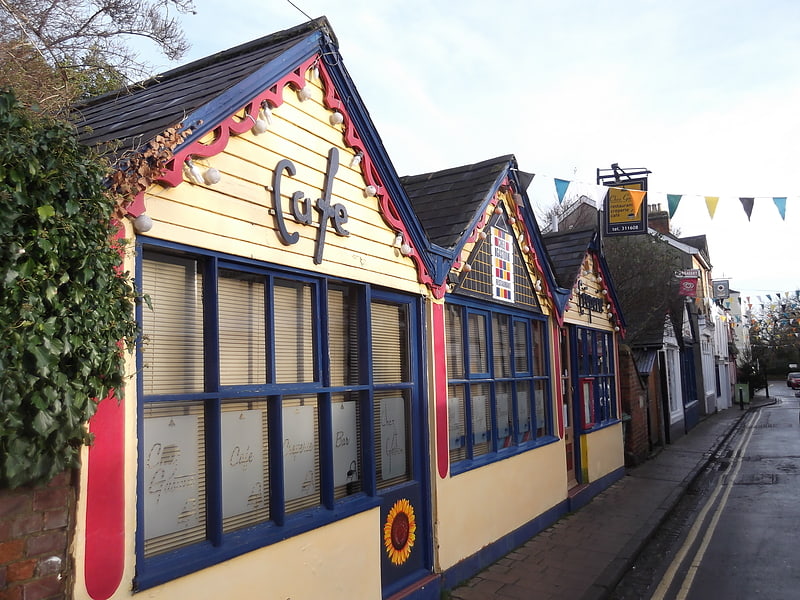
Street in Oxford, England. North Parade, or more formally North Parade Avenue, is a short shopping street in north Oxford, England. It runs between Winchester Road opposite Church Walk to the west and Banbury Road to the east. It is the only shopping street in North Oxford between the city centre to the south and Summertown to the north.[16]
Address: North Parade Avenue, OX2 6LX Oxford
Carfax Tower
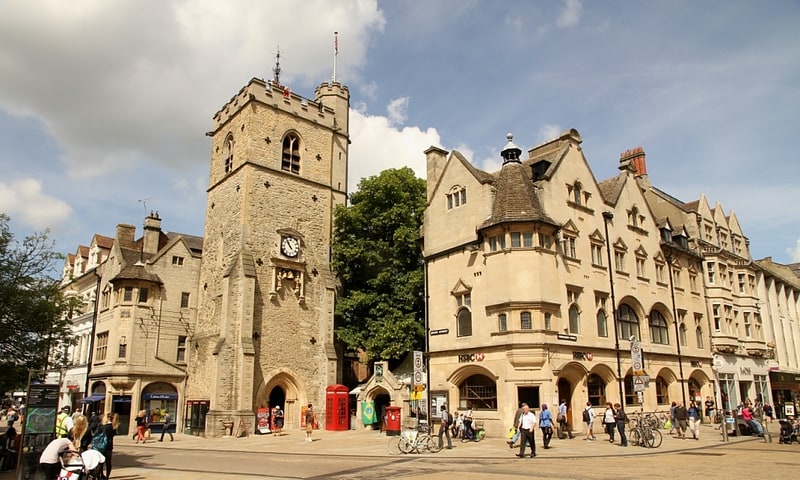
Carfax is the junction of St Aldate's, Cornmarket Street, Queen Street and the High Street in Oxford, England. It is considered to be the centre of the city. The name "Carfax" derives from the Latin quadrifurcus via the French carrefour, both of which mean "crossroads". The Carfax Tower, also known as St. Martin's Tower is a prominent landmark and provides a look-out over the town.[17]
Address: Cornmarket St., OX 1 4 Oxford
Osney Mill Marina
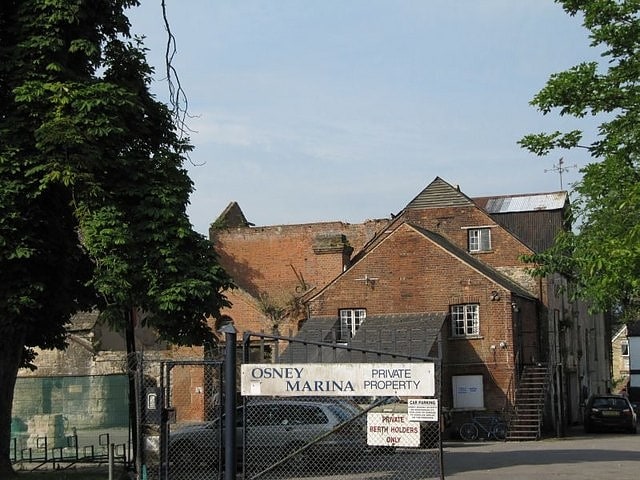
Osney Mill is a former flour mill on a branch of the River Thames in Oxford, England, located south of the Botley Road, down Mill Street. While the mill was gutted by a fire in 1945 and remained derelict for over 60 years, the exterior walls were incorporated into a modern apartment building during the early-2010s that now occupies the site.
Close by the site of the mill is Osney Lock. To the east is Osney Cemetery, to the west is Osney Island, while Oxford railway station lies just to the north.[18]
History of Science Museum
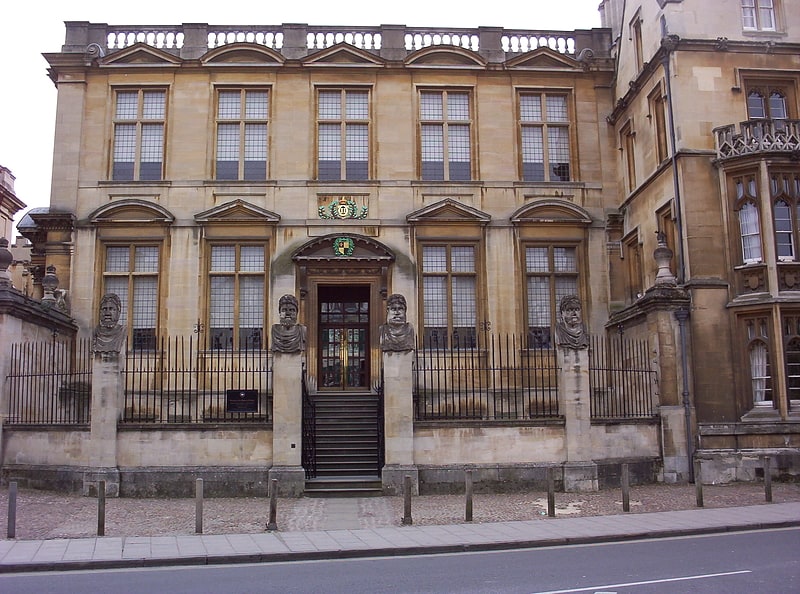
Museum in Oxford, England. The History of Science Museum in Broad Street, Oxford, England, holds a leading collection of scientific instruments from Middle Ages to the 19th century. The museum building is also known as the Old Ashmolean Building to distinguish it from the newer Ashmolean Museum building completed in 1894. The museum was built in 1683, and it is the world's oldest surviving purpose-built museum.[19]
Address: Broad St, OX1 3AZ Oxford
Magdalen Bridge
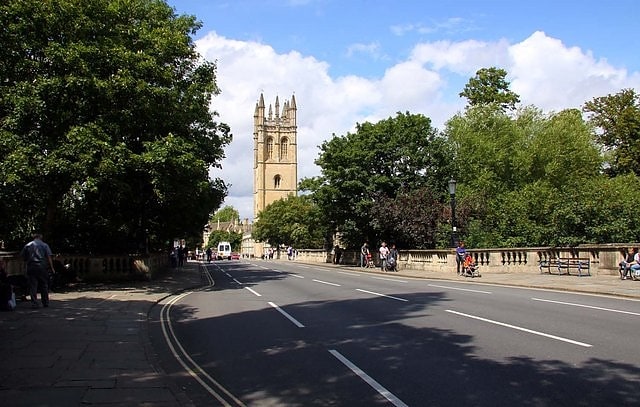
Bridge in Oxford, England. Magdalen Bridge spans the divided stream of the River Cherwell just to the east of the City of Oxford, England, and next to Magdalen College, whence it gets its name and pronunciation. It connects the High Street to the west with The Plain, now a roundabout, to the east.[20]
Address: The Old Horse Ford, OX1 4AX Oxford
Bodleian Library
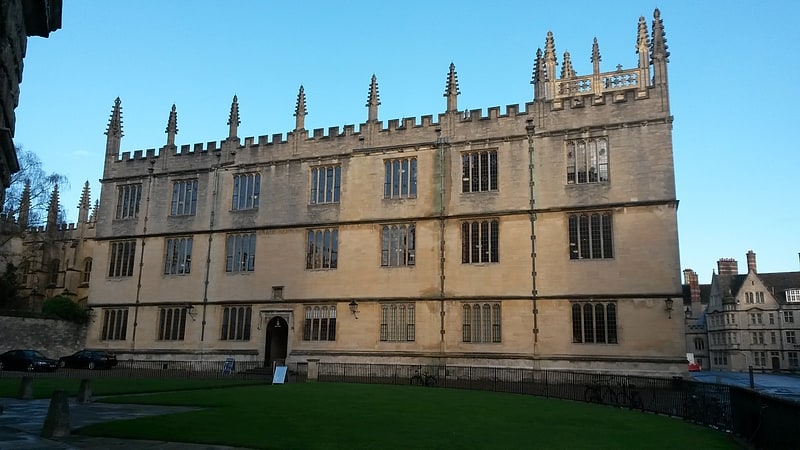
Oxford University main research library. The Bodleian Library is the main research library of the University of Oxford, and is one of the oldest libraries in Europe, and derives its name from its founder, Sir Thomas Bodley. With over 13 million printed items, it is the second-largest library in Britain after the British Library. Under the Legal Deposit Libraries Act 2003, it is one of six legal deposit libraries for works published in the United Kingdom, and under Irish law it is entitled to request a copy of each book published in the Republic of Ireland. Known to Oxford scholars as "Bodley" or "the Bod", it operates principally as a reference library and, in general, documents may not be removed from the reading rooms.
In 2000, a number of libraries within the University of Oxford were brought together for administrative purposes under the aegis of what was initially known as Oxford University Library Services (OULS), and since 2010 as the Bodleian Libraries, of which the Bodleian Library is the largest component.
All colleges of the University of Oxford have their own libraries, which in a number of cases were established well before the foundation of the Bodleian, and all of which remain entirely independent of the Bodleian. They do, however, participate in SOLO (Search Oxford Libraries Online), the Bodleian Libraries' online union catalogue, except for University College, which has an independent catalogue. Much of the library's archives were digitized and put online for public access in 2015.[21]
Address: Broad St, OX1 3BG Oxford
St Michael at the North Gate
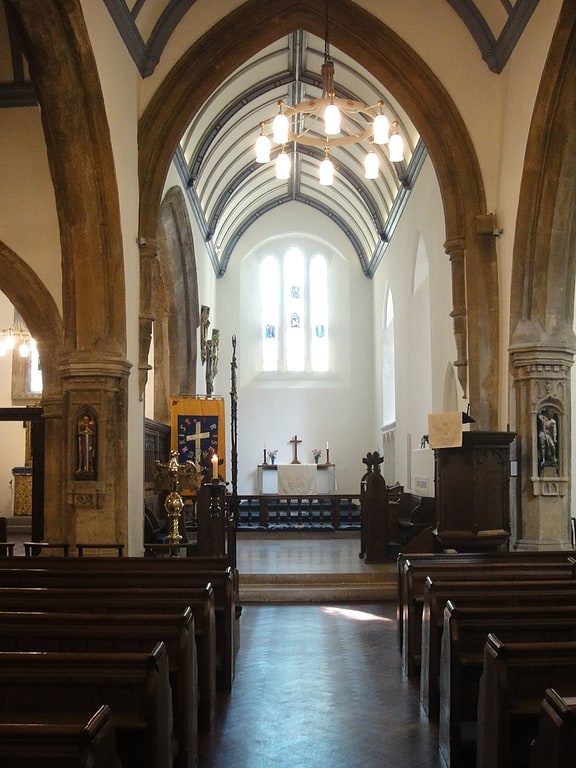
Anglican church in Oxford, England. St Michael at the North Gate is a church in Cornmarket Street, at the junction with Ship Street, in central Oxford, England. The name derives from the church's location on the site of the north gate of Oxford when it was surrounded by a city wall.
Since 1971, it has served as the ceremonial City Church of Oxford, and has joined the parishes of the two earlier City Churches with its own.[22]
Address: Cornmarket St, OX1 3EY Oxford
University Parks
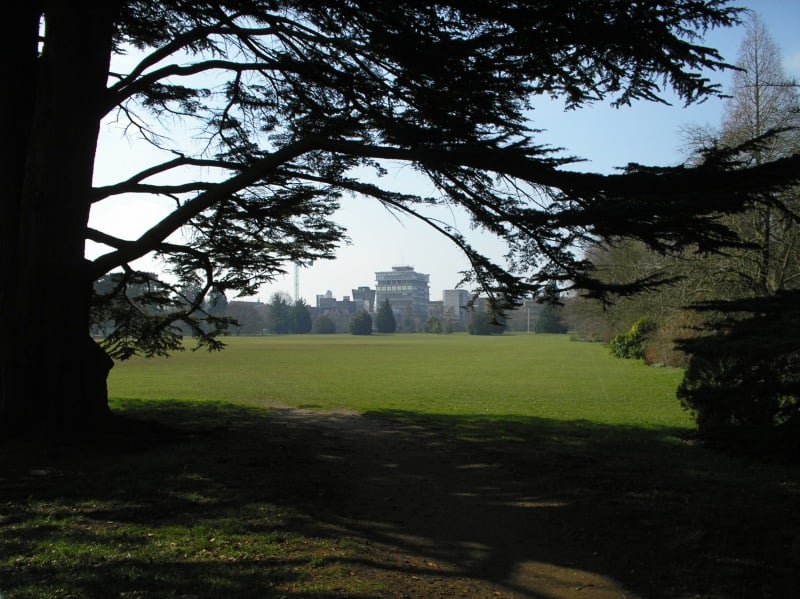
Sports ground in Oxford, England. The Oxford University Parks, commonly referred to locally as the University Parks, or just The Parks, is a large parkland area slightly northeast of the city centre in Oxford, England. The park is bounded to the east by the River Cherwell, though a small plot of land called Mesopotamia sits between the upper and lower levels of the river. To the north of the parks is Norham Gardens and Lady Margaret Hall, to the west the Parks Road, and the Science Area on South Parks Road to the south. The park is open to the public during the day, and has gardens, large sports fields, and exotic plants. It includes a cricket ground used by Oxford University Cricket Club.[23]
Address: Parks Rd, OX 1 3 Oxford
Tom Quad
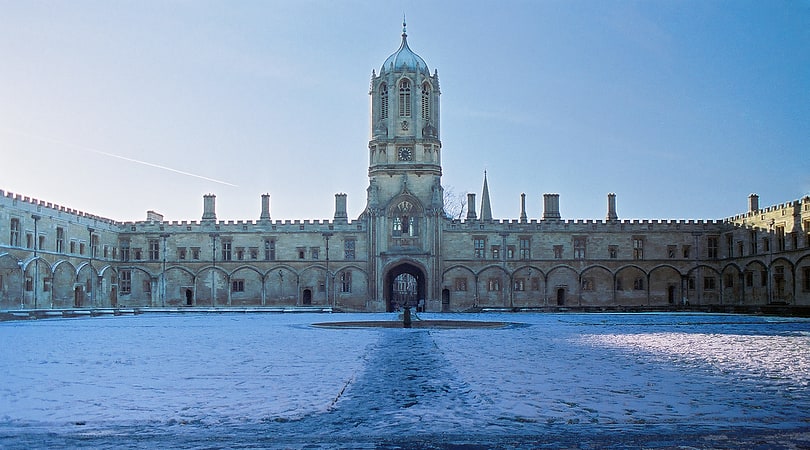
Building in the United Kingdom. The Great Quadrangle, more popularly known as Tom Quad, is one of the quadrangles of Christ Church, Oxford, England. It is the largest college quad in Oxford, measuring 264 by 261 feet. Although it was begun by Cardinal Wolsey in 1525–1529, he was unable to complete it before his fall from power.
Wolsey planned a cloister, but only the starts of the arches on the walls, and of the supports jutting into the lawn were done; these can still be seen around the quadrangle. The main entrance was also left incomplete, and it is not known how the gatehouse was planned to look. After some 150 years, the gatehouse was completed in 1681–1682 with Tom Tower, designed by Sir Christopher Wren, when John Fell was Dean. It is listed Grade I on the National Heritage List for England. A statue of Queen Anne on Tom Tower overlooks the main entrance to the Quad.[24]
Bate Collection of Musical Instruments

Museum in Oxford, England. The Bate Collection of Musical Instruments is a collection of historic musical instruments, mainly for Western classical music, from the Middle Ages onwards. It is housed in Oxford University's Faculty of Music near Christ Church on St. Aldate's.
The collection is open to the public and is available for academic study by appointment. The current curator (as of November 2017) is Andy Lamb, a former NCO who served in the Royal Artillery and was a trumpeter in their Junior Leaders band during his training as a Boy Soldier. There are frequent gallery events and special exhibitions. More than a thousand instruments by important English, French and German makers, are on display, showing the musical and mechanical development of wind and percussion instruments from the Renaissance to the current day.
The Bate Collection is additionally the home of the Reginald Morley-Pegge Memorial Collection of Horns and other Brass and Woodwind Instruments; the Anthony Baines Collection; the Edgar Hunt Collection of Recorders and other instruments; the Jean Henry Collection, the Taphouse Keyboard Loans; the Roger Warner Keyboard Collection; the Michael Thomas Keyboard Collection; a number of instruments from the Jeremy Montagu Collection; a complete workshop of the English bow-maker William C Retford, as well as a small collection of Bows formed in his memory, the Wally Horwood Collection of books and recordings, and other instruments acquired by purchase and gift.
An album, 'Voices From The Past, Vol. 2: Instruments of The Bate Collection' was released in 2015.[25]
Address: St Aldate's, OX1 1DB Oxford
Kassam Stadium
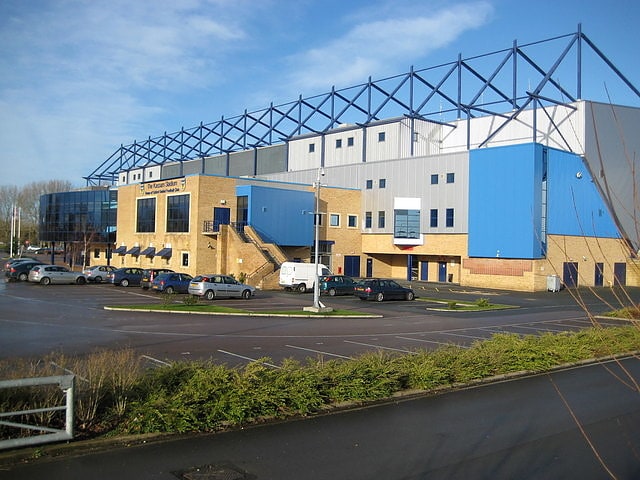
Stadium in Oxford, England. The Kassam Stadium is the home of Oxford United Football Club, and is named after the ground's owner and former chairman of the football club, Firoz Kassam.
The Kassam Stadium currently hosts League One (third tier) games although Oxford were relegated to Division Three (fourth tier) the season before the new stadium was built and were further relegated to the Conference National (fifth tier) in 2005–06. The club was previously based at The Manor Ground from 1925 until the opening of the Kassam Stadium in 2001.[26]
Address: Grenoble Rd., OX4 4XP Oxford
Oxford University Catholic Chaplaincy
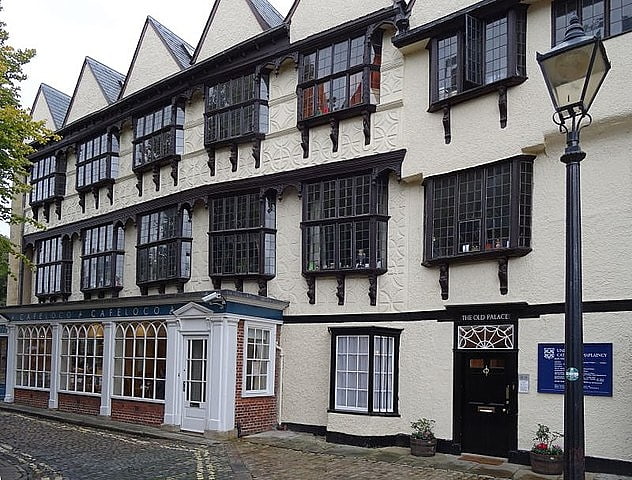
Oxford University Catholic Chaplaincy is based in the Old Palace, also known as Bishop King's Palace. The chaplaincy started in 1896 and moved into its current premises in 1920. The building was originally constructed in 1485 with another part added to it from 1622. It is situated on the corner of Rose Place and St Aldate's, next to Christ Church Cathedral School and Campion Hall. It is a Grade I listed building.[27]
Address: Rose Place, Oxford
Waterperry Gardens
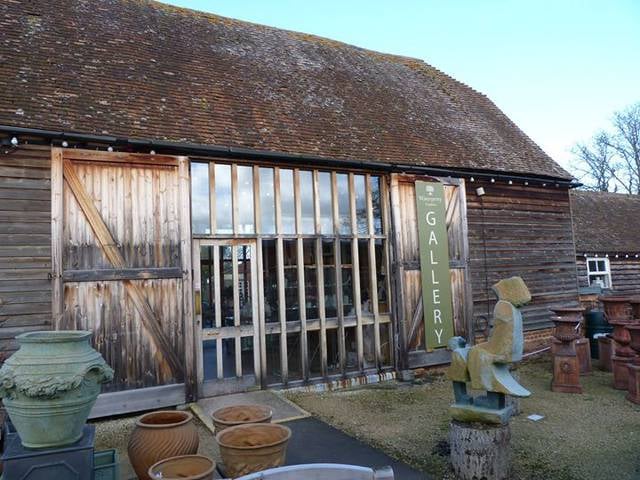
Museum. Waterperry Gardens are gardens with a museum in the village of Waterperry, near Wheatley, east of Oxford in Oxfordshire, England.[28]
Address: Waterperry Rd, OX33 1LA Waterperry
Oxford Stadium

Stadium in Oxford, England. Oxford Stadium is a greyhound racing and speedway venue in Oxford, located in Sandy Lane, Cowley.
Races were historically held every Tuesday, Thursday and Saturday evening with afternoon BAGS (Bookmakers Afternoon Greyhound Service) racing on Friday and Sunday. Race evenings also included Friday evenings at various times throughout the history of the stadium.[29]
Address: Sandy Lane, OX4 6LJ Oxford
St Barnabas Church
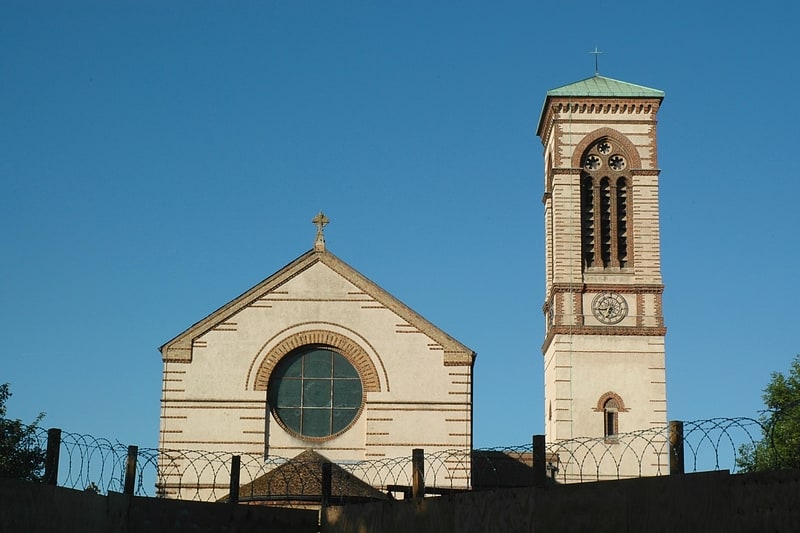
Episcopal church in Oxford, England. St Barnabas Church is a Church of England parish church in Jericho, central Oxford, England, located close to the Oxford Canal.[30]
Address: St Barnabas St, OX2 6BG Oxford
St Peter-in-the-East
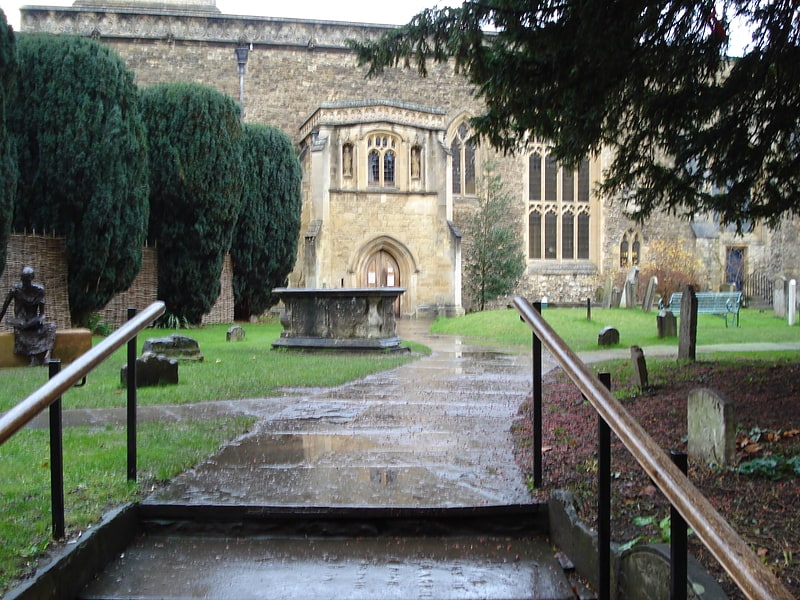
St Peter-in-the-East is a 12th-century church on Queen's Lane, north of the High Street in central Oxford, England. It is now deconsecrated and houses the college library of St Edmund Hall. The churchyard to the north is laid out as a garden and contains a seated bronze statue depicting St Edmund as an impoverished student.[31]
Ultimate Picture Palace
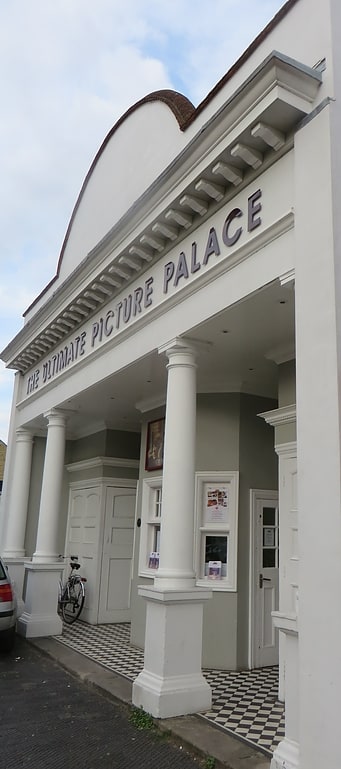
Cinema in Oxford, England. The Ultimate Picture Palace is an independent cinema in Oxford, England. It is Oxford's only surviving independent cinema, showing a mixture of independent, mainstream, foreign language, and classic films.
The cinema has been a Grade II listed building since 1994.[32]
Address: Oxford, Jeune Street, Oxford OX4 1BN
Pitt Rivers Museum
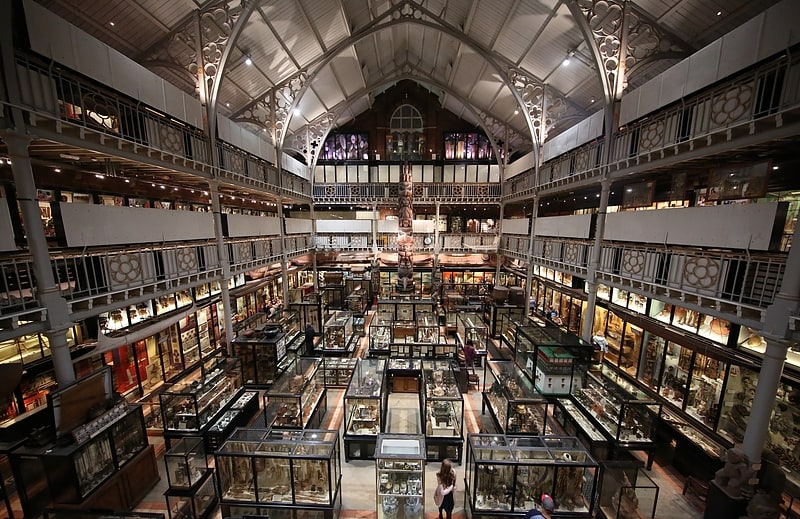
Museum in Oxford, England. The Pitt Rivers Museum is a museum displaying the archaeological and anthropological collections of the University of Oxford in England. The museum is located to the east of the Oxford University Museum of Natural History, and can only be accessed through that building.
The museum was founded in 1884 by Augustus Pitt Rivers who donated his private collection to the University of Oxford with the condition that a permanent lecturer in anthropology must be appointed. Museum staff are involved in teaching Archaeology and Anthropology at the University even today. The first Curator of the museum was Henry Balfour. A second stipulation in the Deed of Gift was that a building should be provided to house the collection and used for no other purpose. The University therefore engaged Thomas Manly Deane, son of Thomas Newenham Deane who, together with Benjamin Woodward, had designed and built the original Oxford University Museum of Natural History building three decades earlier, to create an adjoining building at the rear of the main building to house the collection. Construction started in 1885 and was completed in 1886.
The original donation consisted of approximately 22,000 items; this has now grown to 500,000 items, many of which have been donated by travellers, scholars and missionaries.
On March 17, 2020, the museum shut due to the COVID-19 pandemic, but re-opened on September 22nd, 2020. The decision was made to remove the shrunken heads previously on display during this closure. The heads had been on display since the 1940s.[33]
Address: S Parks Rd, OX1 3PP Oxford
George Street
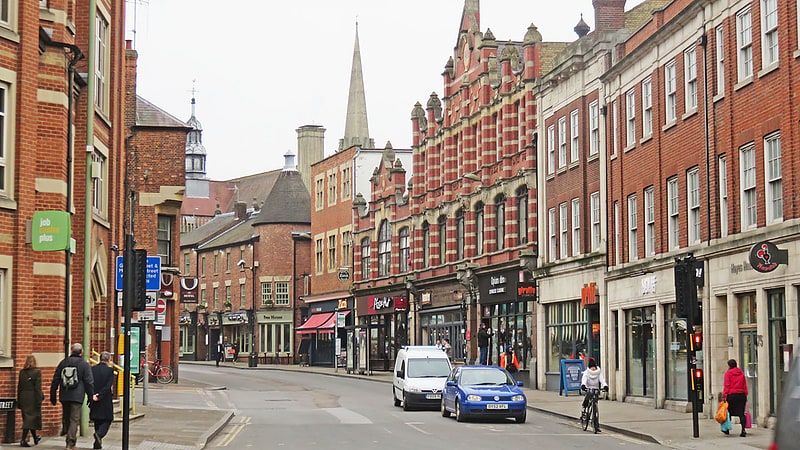
Street in Oxford, England. George Street is a street in central Oxford, England. It is a shopping street running east–west.[34]
Folly Bridge
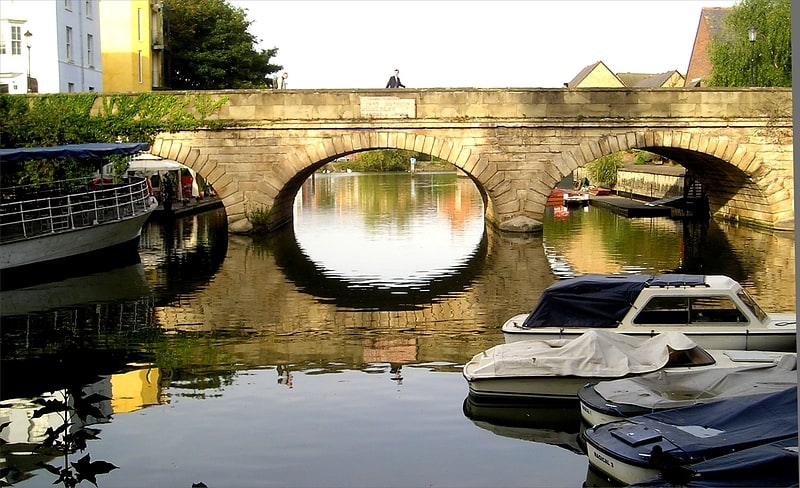
Arch bridge in Oxford, England. Folly Bridge is a stone bridge over the River Thames carrying the Abingdon Road south from the centre of Oxford, England. It was erected in 1825–27, to designs of a little-known architect, Ebenezer Perry, who practised in London.
The bridge is in two parts separated by an island. The origin of the name is uncertain although it has been suggested that it originated about 1650 after a tenant of Bacon's study.[35]